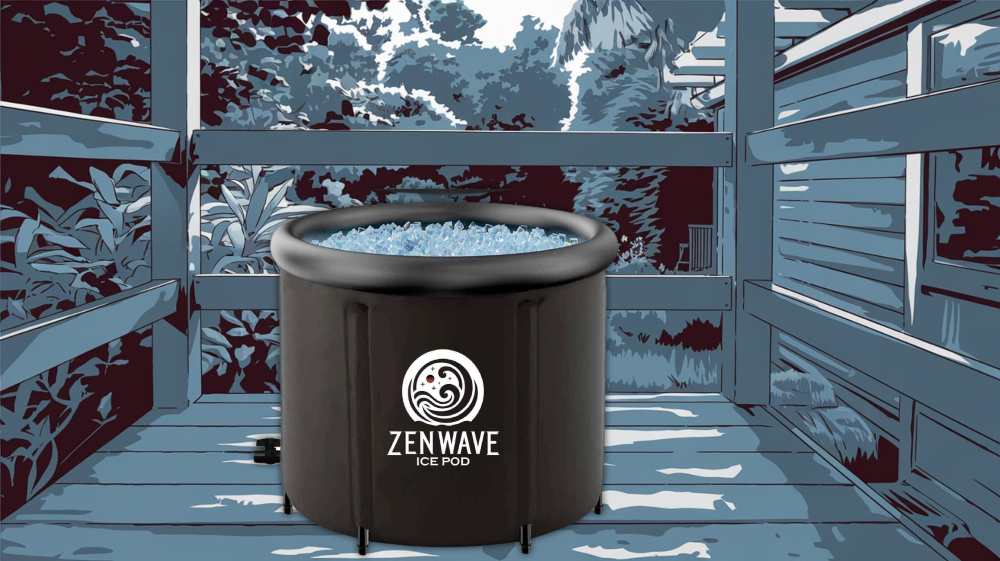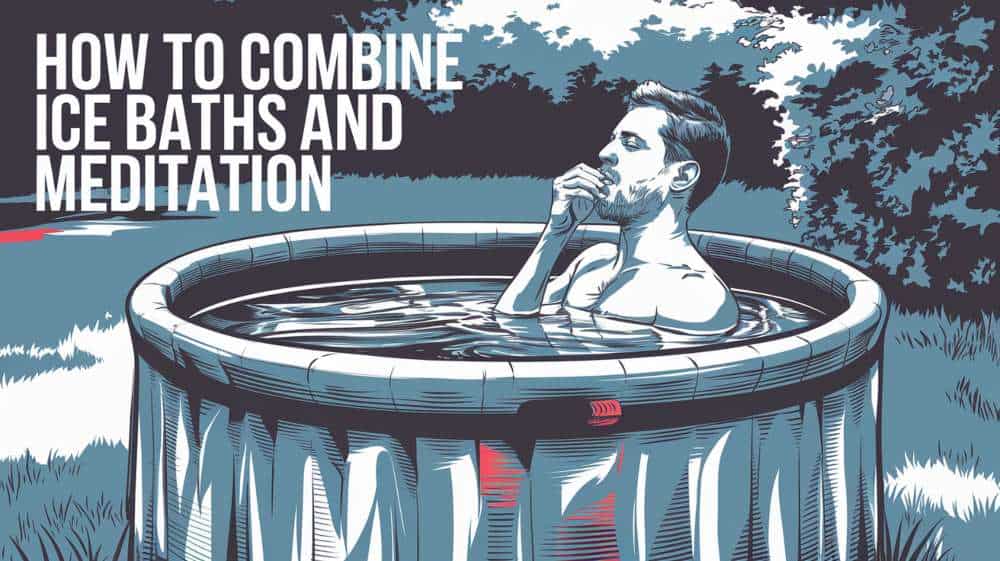Meditation and ice baths are two individual practices that are often underrated for the powerful benefits they provide. Meditation is a centuries-old technique that involves focusing the mind to achieve a state of calmness, clarity, and heightened awareness. It has been shown to reduce stress, improve emotional well-being, and enhance cognitive function.
While many people are familiar with the physical benefits of ice baths, such as reducing inflammation, speeding up muscle recovery, improving circulation, and boosting the immune system, a primary reason for engaging in this practice is the mental benefits it offers. Immersing yourself in cold water can lead to increased mental resilience, a profound mental reset, and a strengthened mind-body connection.
When done together safely and correctly, meditation and ice baths have the potential to further provide a profound sense of wellbeing, resilience, and self-mastery. However, if your meditation does invlove heavy breathwork you should approach this combination with knowledge and care.
In the following sections, we’ll explore three safe and effective ways to integrate meditation and ice baths into your wellness routine, allowing you to experience their transformative benefits without compromising your health or comfort.
How to Combine Ice Baths and Meditation
1. Mindfulness Meditation in Ice Baths
Incorporating mindfulness meditation into your ice bath practice can help you stay present, manage discomfort, and deepen your mind-body connection. Mindfulness involves paying attention to your present-moment experiences with openness and curiosity, without forcing inhales or exhales.
When applying mindfulness to ice baths, focus on the sensations you experience as you immerse yourself in the cold water. Notice how the cold feels against your skin, observing any changes in sensation as your body adjusts. Pay attention to your breath, noticing the rhythm and depth of each inhalation and exhalation.
If your mind begins to wander or fixate on the discomfort, gently redirect your attention back to your breath and bodily sensations. Acknowledge any thoughts or emotions that arise without getting caught up in them, and simply let them pass.
To practice mindfulness meditation in an ice bath safely:
- Set a timer for your desired ice bath duration, starting with shorter sessions and gradually increasing.
- Enter the ice bath slowly, giving yourself time to adjust to the cold.
- Once immersed, focus on your breath and the sensations in your body, practicing mindfulness as described above.
- When the timer goes off, exit the ice bath slowly and give yourself time to warm up naturally.
By combining mindfulness meditation with ice baths, you can cultivate a greater sense of presence, and resilience in the face of discomfort. Remember to listen to your body and respect your limits, never pushing yourself beyond what feels safe and manageable.
2. Guided Meditation and Visualization
Guided meditation and visualization techniques can be powerful tools to help you prepare mentally for an ice bath and manage the intensity of the experience. By listening to a soothing voice and engaging your imagination, you can create a sense of calm, focus, and resilience.
Before entering the ice bath, find a comfortable seated position in a quiet space. Choose a guided meditation that resonates with you, whether it’s a recording specifically designed for cold exposure or a general mindfulness or relaxation practice.
As you listen to the guided meditation, follow the instructions and allow yourself to be fully immersed in the experience. The guide may prompt you to visualize a peaceful scene, such as a serene beach or a tranquil forest, to help you relax and center yourself.
You might also be guided to visualize yourself successfully completing the ice bath, feeling strong, calm, and in control. This mental rehearsal can help you approach the actual experience with greater confidence and ease.
When you feel ready, slowly transition to the ice bath, carrying the sense of calm and focus cultivated during the guided meditation with you. If you find your mind wandering or your discomfort increasing during the ice bath, you can silently repeat a positive affirmation or mantra from the meditation to help you stay grounded.
To ensure a safe and effective practice:
- Choose a guided meditation that is appropriate for your level of experience and comfort with cold exposure.
- Ensure you have a safe, quiet space to practice the guided meditation before transitioning to the ice bath.
- Set a timer for your ice bath session, and respect your body’s limits, exiting the bath if you experience any concerning symptoms.
- After the ice bath, give yourself ample time to warm up and reflect on your experience, noting any insights or challenges that arose.
By combining guided meditation and visualization with ice baths, you can harness the power of your mind to navigate intense sensations, build mental resilience, and deepen your self-awareness. As always, prioritize safety and listen to your body, modifying your practice as needed to support your overall well-being.
3. The Wim Hof Method

The Wim Hof Method is a well-known approach that combines breathing techniques, cold exposure, and mindset training. Developed by Dutch extreme athlete Wim Hof, this method has gained popularity for its ability to enhance physical and mental resilience.
The method consists of three key components: controlled breathing exercises, gradual cold exposure, and commitment to a positive mindset. The breathing technique involves deep, rhythmic inhalations and exhalations, followed by breath retention and controlled release. This process is believed to oxygenate the body, reduce stress levels, and promote a state of heightened awareness.
When practicing the Wim Hof Method, it’s essential to prioritize safety. One crucial rule is to never perform the breathing exercises before, during, or in close proximity to an ice bath, as it can lead to unconsciousness and drowning.
The safest way to incorporate this method is to:
- Begin with the ice bath, staying in the cold water for a controlled period of time.
- After exiting the ice bath, give your body time to recover and warm up naturally.
- Once you feel comfortable and your body has stabilized, find a dry place to perform the breathing exercises and meditation.
By following this sequence, you can safely enjoy the benefits of the Wim Hof Method, which include increased mental clarity, reduced stress, and a stronger mind-body connection. It’s important to allow your body to recover after the intense experience of an ice bath before engaging in any serious breathwork or meditation.
For more on the Wim Hof Method check out the best ice bath breathing techniques.
Starting Ice Baths and Meditation
Mixing meditation with ice baths can be a really powerful way to improve both your physical and mental health. By trying out safe and effective methods like the Wim Hof Method, mindfulness meditation, and guided visualization, you can experience the amazing benefits of these practices.
If you want to start this journey of self-discovery and inner strength, the ZenWave Ice Pod is a great tool to help you get going. This affordable but quality ice bath offers an incredible cold therapy experience, letting you enjoy the many benefits of cold exposure right in your own home.

The ZenWave Ice Pod is not only one of the most affordable ice baths but ha some really impressive features, such as:
- A huge 116-gallon size that gives you plenty of room to fully immerse yourself
- A strong and comfortable five-layer design that keeps the cold in
- A protective outer layer made from tough nylon fabric
- Waterproof PVC layers that make the tub extra sturdy
- A thick 4mm EPE padding layer that insulates and feels comfy
- A smooth, easy-to-clean PVC interior
- Comes with important accessories like a protective cover and insulation cushion for easy setup

